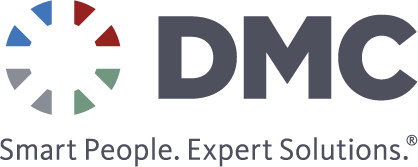Projects in Aerospace, Defense, and Government (ADG) sectors demand unwavering reliability—failure is not an option. At DMC, we understand that designs are only meaningful if they result in real, working systems. In the high-stakes world of mission-critical applications, the implementation phase is just as important as planning. It’s not enough to simply follow a plan—we must prove that every requirement is fulfilled exactly as intended.
This philosophy is embedded in DMC’s software engineering process, emphasizing bidirectional traceability from requirements to code. Guided by NASA Procedural Requirement 7150.2 SWE-052, DMC ensures a chain of custody that remains unbroken throughout the lifecycle of a project.
Building the Chain of Custody Through Smart Tooling and Practices
Maintaining alignment between stakeholders and developers demands an intentional system linking code and development artifacts to the original designs. Achieving this linkage requires four key elements:
- Clear declaration syntax and scope
- Integrated Development Environments (IDEs) that can be programmatically queried
- Comprehensive and maintained reports showing traceability
- A developer culture that prioritizes and celebrates traceability
Recognizing the heavy load of daily “coding chores”—writing tests, following standards, creating designs, and more—DMC minimizes the added burden by building intuitive systems for requirement coverage declaration.
Careful consideration is given to defining the correct unit of code granularity. Overly detailed tagging bloats the code; too coarse a unit makes traceability meaningless. We apply principles like the Single-Responsibility Principle (SRP) to define natural code units—classes, libraries, interfaces, and singular functions—that efficiently map to requirements.
Furthermore, DMC’s system highlights Safety-Critical Requirements, automatically updating design documents with icons, special qualifiers like #SC, and clear banners, ensuring developers apply the extra care required for safety-critical elements.

Leveraging COTS Solutions for Enhanced Development
DMC’s expertise across numerous programming environments enables us to use COTS solutions (Commercial Off-The-Shelf) like NI LabVIEW, NI VeriStand, NI TestStand, and Python. By leveraging these technologies, our teams can programmatically audit requirement coverage within codebases, ensuring an efficient and thorough verification process.

We build custom tooling on top of COTS APIs, allowing developers to generate automated coverage audits and detailed, web-based traceability reports. These reports provide chain of custody information, linking:
- Requirements (with IDs and references to the Requirements Traceability Matrix)
- Design documents that address the requirements
- Code units that implement the designs
This process meets compliance standards and drives down costs without sacrificing quality.
Culture of Traceability and Excellence
Even the best tools are ineffective without the right culture. At DMC, we practice A.R.T.ful Engineering—Accountable, Reliable, and Traceable development. Our emphasis on traceability is not just about meeting external standards like NASA 7150.2—it’s about building systems with purpose, discipline, and full transparency.
Our software engineering process, our use of COTS solutions, and our dedication to managing mission-critical applications all come together to provide our clients with unparalleled confidence. With DMC, you can trust that your vision will become a reality—built with rigor, resilience, and reliability.
Your success is our mission, learn more about DMC’s Test & Measurement Automation Solutions and contact us for your next project.
Explore Additional Blogs in this Series
Read more about other key topics in NPR 7150.2 compliance through the remainder of our ADG Mission-Critical Applications series:







